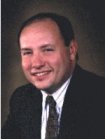The nature of much of the “training” that Eogogics does has been changing over the last twelve months. I hadn’t really noticed it until a training client brought it up. “This training session is really great”, he said. “It provides a “cheap” second opinion on a lot of our development directions.” His comment really did explain a lot. It explained, for instance, why a lot of the “students” seemed to already know most, if not all, of the course material. Some of them had even been involved with the standards committees and/or written their company’s marketing or technical product plans. So, why do these folks need “training”? It also explained why there were almost no questions about the core material but a lot of “what ifs” and discussion about interpretation of the standards, implementations in the marketplace, and about what makes “sense”. It turns out, in this and other cases, that what the customer really needed lies somewhere between traditional stand-up training and traditional consulting but that neither exactly fit their needs. Should we call it “training with a broader purpose”? Or “consulting guided by slides”? Both would be accurate, yet neither tells the full story.
This new direction in training is not just for companies producing products or services, either. In addition to companies producing products as diverse as stealthy crypto implementations for use deep in the core of government networks and carrier revenue assurance solutions, Eogogics has also worked with manufacturers of office systems needing a “second opinion” on company-wide VoIP implementation and a South American government standards bureau who needed a second opinion on their interpretation of wireless standards.
An interesting observation on this new twist in training is that while training is often the first thing to be reduced or eliminated entirely in a down market, “training as a second opinion” seems to be gaining ground and increasing in value to the subject organization and, in fact, is an area where Eogogics has come to excel. One of the reasons Eogogics is being sought out by clients is that we shun “professional trainers”, i.e., folks who are equally at ease (or ill at ease) training on the internals of SONET frame overhead as they would be on air conditioner installation. We rely instead on seasoned telecom practitioners with real-world experience who can leverage their knowledge/experience base to tackle a variety of situations. Unlike the well-rehearsed professional trainer, an Eogogics instructor is not frightened at the prospect of going off-script and most are as comfortable conversing with the chief design engineer as they are with the chairman of the board. This is a unique skill-set, indeed, but one for which clients have a growing need.
A Second Opinion, but Is It “Cheap”?
My first attempt at understanding this new idea was to challenge the idea that it was “cheap”, or at least “inexpensive”. Yes, so it turned out, clients do consider it a value. While the total cost was on par with, or just slightly below, a consulting fee for a similar period of time, a lot of the value lies in the fact that the material is covered systematically and completely in a two-to-three day time frame during which everyone focuses on one narrow topic and can take deep-dives into specific areas. By not dragging out the process over weeks or months, the client sees a lot of benefit in a short time and it is over and done with relatively quickly. In addition to the deep dives, which are appreciated by the experts, there is a full, systematic presentation of the chosen topics that benefits the entire class, providing a common vocabulary, a shared frame of reference, and a level playing field. This is no small outcome for companies with limited time and dollar budgets, trying to do more and more with less and less. It is also noteworthy that most clients include both engineering/technical and marketing/sales personnel in the classes to develop a common understanding and closer working relationship between these key areas.
Success Factors
As with other Eogogics training programs, the success lies in a complete understanding of the client’s needs, in choosing the instructor whose skills profile correlates tightly with those needs, and in customizing the standard course outlines – and even the teaching methods – to match the needs of the client. All of these are areas where Eogogics can apply years of experience. It is also important in engagements that attempt to go beyond traditional training that time be allowed for the side discussions and deep dives and that neither our faculty member nor the client are slaves to the PowerPoint deck or the ticking clock. In many engagements a third day has been added to a two-day class to provide sufficient time for the exchange of information and to assure that questions are handled completely and the answers fully documented to maximize knowledge transfer. In some cases the client has presented more on the third day than the Eogogics faculty member.
Another success factor is to assure, often under a Non-Disclosure Agreement, that our instructor is fully briefed on the client’s plans, direction, product road map, competitive positioning, and other factors that can impact what information is emphasized and how it is presented. An instructor can never be too prepared and the more time the client invests in helping us get more fully prepared, the more dividends it will pay in the long run.
Conclusion
In a down market, conventional wisdom says to “cut training”, but in the current downturn savvy companies are using traditional stand-up training to supplement their planning processes, to double check their thoughts and ideas, to break log-jams and bottlenecks and to, quite literally, get a professional, qualified and well-thought-out second opinion.
Editor’s Note: Jim Cavanagh trains and consults for Eogogics on a range of topics on Optical Networks, IP based Technologies, and Public Safety and Security. A prolific author, he’s now on his sixth book.

